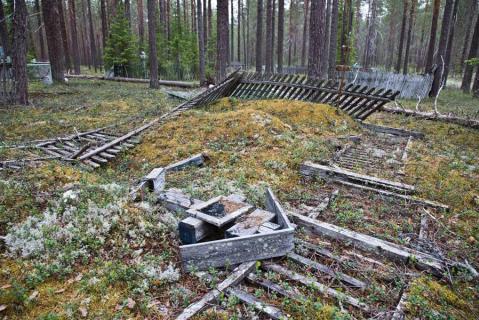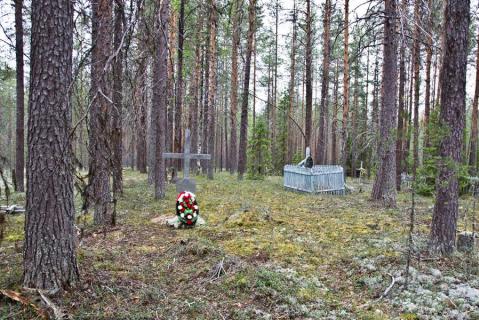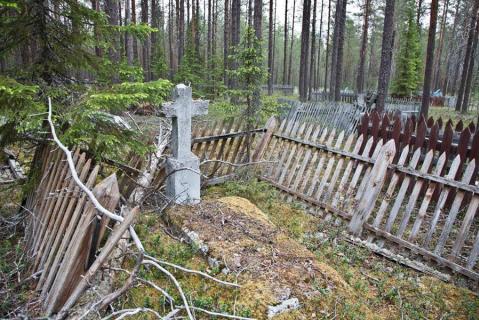The Syuzma labour settlement came into existence in 1934. Its first inhabitants were dekulakised peasant families from various parts of the USSR and they all worked for the Pinegoles timber concern. In 1940-1942 deported Poles lived in Syuzma and after 1945 exiled Ukrainians. The graveyard was in a wooded area and today the Polish and Ukrainian graves stand there, side by side. The numbers of men, women and children buried there have not been determined; no lists of names are available.
By the 1960s, the village was uninhabited and burned down; the graveyard was abandoned. In June 2013, the graveyard was investigated by a joint Russian-Polish expedition, from the Museum of the Second World War in Gdansk and the Polonia society in Arkhangelsk. A metal cross with a commemorative plaque was erected on the grave of Polish deportee Maria Tipeltowa (d. 1942).
The Memorial online database (2025) includes the names of 56,173 Polish citizens deported to the Arkhangelsk Region and records that 3,872 died there. (The source is the 1997 database mentioned elsewhere.)
36,454 of the deportees were men and women of Polish nationality, 11,883 were Jewish, 4,904 Belorussians and 1,894 Ukrainians.
| Date | Nature of ceremonies | Organiser or responsible person | Participants | Frequency |
|---|---|---|---|---|
|
nk
|
Civil rites
|
nk
|
nk
|
From time to time
|
| State of burials | Area | Boundaries |
|---|---|---|
|
Mounds over 1940s burials have mostly been levelled off; a few graves and headboards from the 1960s have survived
|
not determined
|
partially delineated
|
[ Original texts & hyperlinks ]
“Syuzma labour settlement cemetery”, Virtual Museum of the Gulag [retrieved, 28 May 2022; no longer accessible]



